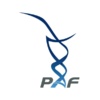PAF Awards $49,953 New Research Grant in 2021
PI: Pawel Swietach, Professor of Physiology, Department of Physiology, Anatomy & Genetics, University of Oxford, England
“Aberrant protein propionylation and distinct histone marks in propionic acidemia: new disease mechanisms and risk factors for cardiac disease”
The challenge placed on our hearts – to contract and relax in a correct sequence and with adequate strength – is formidable. The elegant biological solution to this mechanical problem is an organ that pumps millions of liters of blood to support life for many decades. However, the quality and span of a person’s life is strongly linked to cardiac health. Thanks to scientific breakthroughs, better treatments are now available for cardiac disease, allowing patients to live longer and happier lives. Our goal at Oxford University’s British Heart Foundation Centre of Research Excellence is to ensure that scientific progress addresses a wide spectrum of disorders, irrespective of their incidence.
Cardiac problems are common in propionic acidemia (PA). Sadly, dilated cardiomyopathy and long-QT syndrome are often the cause of childhood death. In order to treat and prevent these cardiac problems, we must first understand the underlying mechanisms. Once these processes are described, our aimis to identify targets for drugs or interventions. We believe that this ambition is achievable thanks to the wealth of knowledge about the heart and the vast repertoire of drugs approved for therapy in various other cardiac conditions. Many of these drugs could be “repurposed” for PA-associated disorders, giving hope to many families for a timely treatment.
For this PAF-funded project, we have assembled a consortium of scientists who are eager to devote their expertise to studying PA. My laboratory’s expertise is in cardiac cellular physiology in the context of acid-base disorders. We are joined by Tom Milne who is Associate Professor in Epigenetics at Oxford, Holger Kramer, an expert on proteomics, and Steve Krywawych, principal biochemist at Great Ormond Street Hospital in London. Resources and facilities made available to this project include a mouse model of PA, courtesy of Michael Barry and Lourdes Desviat, methods to characterise cardiac function from the cell to organ level, as well as measurements of changes at the protein and gene level. This interdisciplinary but focused approach allows us to identify potential targets for PA treatment. Indeed, our preliminary findings point to one such enzyme, and the aim of this project is to test and validate our hypothesis.
PA is associated with major metabolic changes, and many of these substances are not merely intermediates in a chain of events, but can have strong biological actions that are not always intuitive to predict. Our project will investigate how the build-up of propionate affects cardiac genes through a chemical reaction that causes DNA scaffolds (called histones) to “open up” genes that should not normally be expressed in a healthy heart. Many genes will be affected by this, but some are more closely linked to the cardiac disorder. After identifying these lead genes, we will test the extent to which blocking these could be curative. In parallel, we will investigate if propionate can also react with other targets in the cell, such as proteins underpinning contraction. Indeed, our work suggests that a promising avenue for research relates to so-called excitation-contraction coupling, a process that converts cardiac electricity to a mechanical response.
We are excited to be part of the PA research family and wish to take this opportunity to invite patients, carers, and supporters to our lab for a visit.
Update 8/2022 – Final Report
ABERRANT PROTEIN PROPIONYLATION AND DISTINCT HISTONE MARKS IN PROPIONIC ACIDEMIA: NEW DISEASE MECHANISMS AND RISK FACTORS FOR
CARDIAC DISEASE
Final Report – August 2022
PI: Pawel Swietach (Oxford University)
Non-confidential report for dissemination
Patients affected by propionic acidemia (PA) present with disturbances in the levels of metabolites, notably propionate. This small (three-carbon) molecule is normally produced
from the breakdown of substances in the diet, such as branched-chain amino acids and odd-numbered fatty acids. In PA, however, genes responsible for propionate processing are
inactivated by inherited mutations. A long-standing view postulates that the ensuing biochemical milieu is responsible for the dysfunction of multiple organs affected in PA.
Understanding how the heart is affected in PA is particularly important, because many childhood deaths have been linked to cardiac disease. However, the precise mechanism
linking the metabolic disturbance with heart disease in PA is unclear. Without this detailed information, it is difficult to propose new cures and improve disease management before
viable gene therapies are available. Moreover, knowledge of the molecular mechanisms has broader impact on cardiac health, because elevations of propionate have also been
described in other diseases, such as diabetes.
The aim of our PAF project was to investigate how the metabolic derangements in PA affect proteins through so-called post-translational modifications, i.e. chemical ‘editing’
that can affect their functions. Using a mouse model of PA, we showed that histones, the protein scaffold of DNA, undergo two types of modifications in the heart: propionylation and acetylation. We then demonstrated how these actions affect the expression of genes in the heart. Strikingly, we found that several genes, previously implicated in cardiac disease, become aberrantly activated in PA, and we speculate that dampening this PA-driven genetic response may alleviate the pathological changes experienced by patients. Through our observations of the mouse model of PA, we identified a novel biochemical pathway that offers an alternative means of processing excess propionate in the heart. Activation of this pathway was associated with a less severe disease presentation in mice. We hypothesize that this pathway could be exploited therapeutically in PA patients, and our immediate aims for the future are to identify the best approach for exploiting this protective reservoir for propionate in the heart.
In summary, the PAF project has (i) delivered novel mechanistic insights into how propionate affects the heart using state-of-the-art methods in metabolomics, transcriptomics,
chromatin biology, and physiology, and (ii) revealed new pathways for propionate processing that by-pass the mutated enzymes in PA patients.
